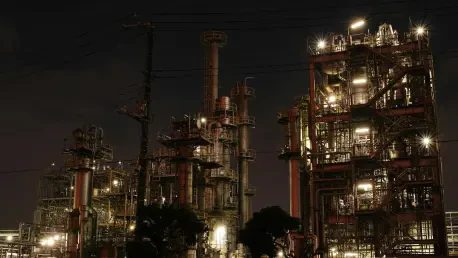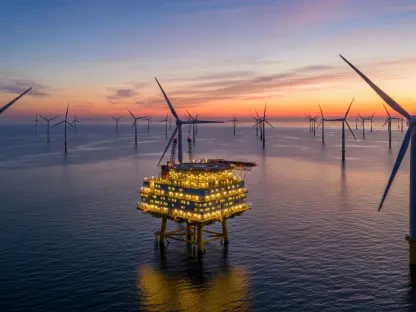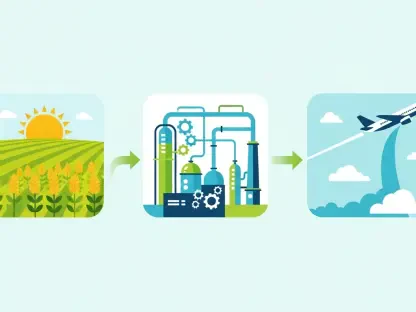Setting the Stage for a Shifting Oil Landscape
Imagine a global energy market teetering on the edge of transformation, where every barrel of oil produced could tip the balance between scarcity and surplus, and in 2025, the Organization of the Petroleum Exporting Countries (OPEC) and its allies, known as OPEC+, stand at the forefront of this delicate dance. They are revising their forecasts for 2026 with a surprising twist: a drastically reduced supply deficit. This adjustment, driven by a significant uptick in production, signals a pivotal moment for oil prices, market stability, and the broader energy sector. The purpose of this market analysis is to dissect these updated projections, uncover the underlying trends, and evaluate their implications for stakeholders across the industry. By delving into the data and dynamics shaping this outlook, a clearer picture emerges of how OPEC+’s strategies are redefining the future of oil in a rapidly evolving world.
Diving Deep into Oil Market Trends and Projections
OPEC+ Production Surge: Narrowing the 2026 Gap
At the heart of the current market shift lies OPEC+’s decision to ramp up output, a move that has dramatically altered supply expectations for the coming year. As of this year, production levels have climbed to 43.05 million barrels per day (bpd), reflecting a deliberate strategy to unwind previous output cuts faster than anticipated. This increase has led OPEC to revise its 2026 deficit forecast from a substantial 700,000 bpd to a mere 50,000 bpd, assuming current rates hold steady. Such a near-balanced market suggests a calculated effort by OPEC+ to maintain influence over global supply while meeting demand without creating significant shortages. However, this aggressive production boost comes with risks, as oil prices have recently slumped to a five-month low, lingering just above $63 per barrel, raising concerns about potential oversupply.
Demand Forecasts: A Tale of Contrasting Expectations
Beyond production adjustments, the oil market’s future hinges on varying predictions about global demand. OPEC remains notably optimistic, projecting a steady rise in consumption, driven by strong economic indicators from major players like the United States, Japan, India, and China. This bullish stance anticipates robust growth through 2026, positioning oil as a cornerstone of energy needs despite global shifts toward renewables. In stark contrast, other industry forecasters, including the International Energy Agency (IEA), paint a more cautious picture, expecting slower demand growth due to the accelerating adoption of alternative energy sources. This discrepancy fuels a broader debate about the pace of the energy transition and its impact on oil’s long-term relevance, creating uncertainty for market planners and investors alike.
Non-OPEC Growth and Geopolitical Complexities
Adding another layer of complexity, production trends outside OPEC+ are reshaping the supply landscape. Countries such as the United States, Brazil, and Guyana are scaling up their output, contributing to fears of a global surplus in 2026, with some analyst polls predicting an excess of 1.6 million bpd and the IEA forecasting an even larger overhang of 3.3 million bpd. Within OPEC+ itself, member compliance with production quotas varies, reflecting domestic economic pressures and strategic priorities. Geopolitical tensions in oil-rich regions further cloud the outlook, as potential disruptions could tighten supply unexpectedly, while economic slowdowns in key consumer markets might suppress demand. These multifaceted variables underscore the challenge of achieving market equilibrium in an interconnected global system.
Price Pressures and Long-Term Market Tightness
The immediate consequence of increased production is evident in current oil price dynamics, where oversupply fears exert downward pressure. Trading slightly above $63 per barrel, the market reflects a cautious sentiment among traders wary of further output hikes tipping the scales. Yet, a longer-term perspective offers a counterpoint, with industry leaders suggesting that supply constraints could emerge over the medium to long term, potentially leading to tighter markets by the end of the decade. This duality—short-term softness versus future scarcity—presents a strategic conundrum for producers and investors navigating volatile price cycles. Balancing immediate output decisions with future capacity planning becomes paramount in this uncertain environment.
Reflecting on Key Insights and Charting the Path Forward
Looking back on this analysis, it becomes evident that OPEC+’s bold move to increase production reshaped the 2026 oil market outlook, slashing the projected deficit to near-negligible levels. The divergence in demand forecasts between OPEC’s optimism and more conservative industry views highlights deep uncertainties about the energy transition’s trajectory. Additionally, non-OPEC production growth and geopolitical risks compound the challenges of predicting market balance. For stakeholders, the next steps involve adopting adaptive strategies—oil producers need to prioritize flexible output adjustments to mitigate price volatility, while investors are advised to diversify into renewable energy to hedge against long-term shifts. Policymakers, meanwhile, must focus on fostering energy efficiency and alternative fuel adoption to reduce dependence on fluctuating oil markets. Staying attuned to global economic trends and geopolitical developments remains critical for navigating the evolving landscape, ensuring resilience in a sector poised for transformation.









